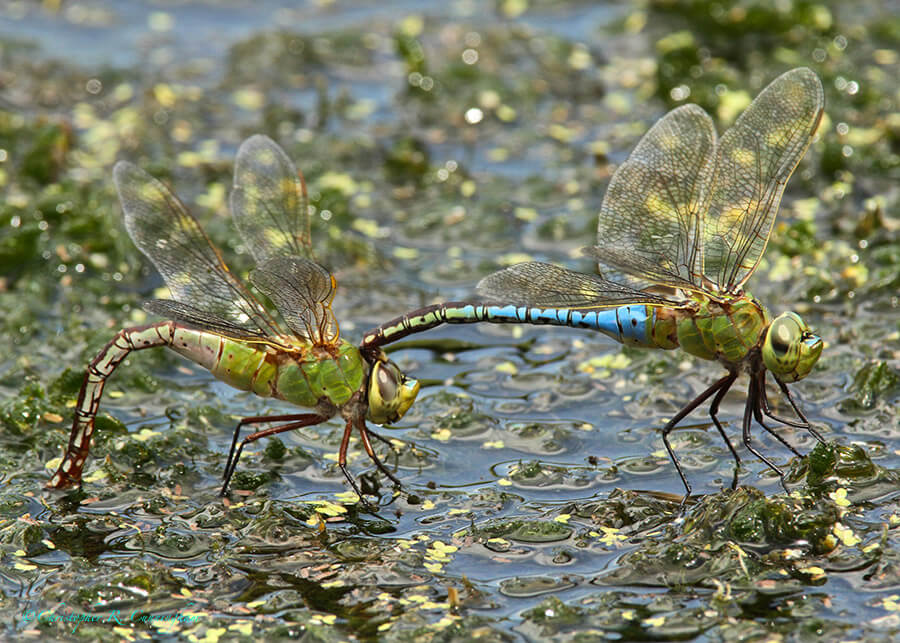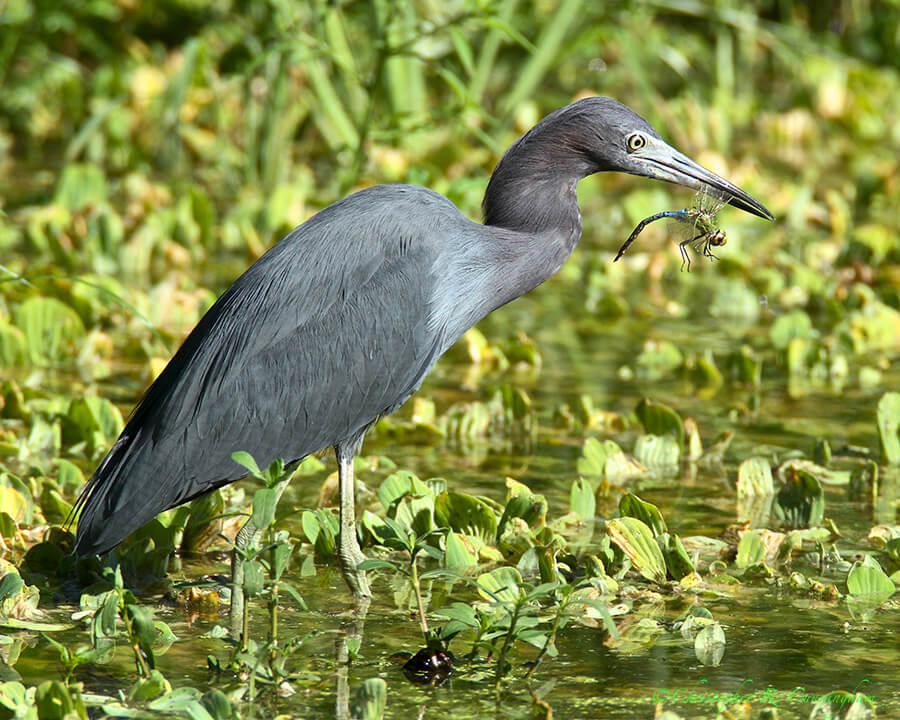
I have noticed a large up-tick in the number of Green Darners (Anax junius) around the Texas Gulf Coast. This no surprise as Green Darners migrate from as far north as Alaska to as far south as Panama during the fall. The details of Green Darner migration across North America are sketchy, but many millions fly south during fall with their avian predators. Why some Green Darners migrate and others stay put is a mystery, but the north-south migration is intergenerational as the reproductive adult typically only lives for an estimated 4-7 weeks. On an individual basis, telling a migrant from a resident is generally not possible.
For a bird photographer, the waxing and waning of abundance of adults of different dragonfly species means that I get to shoot birds preying on different species of dragonflies throughout the spring, summer, and fall. For dragonflies, it seems likely that emergence (molting into the flying adult from the aquatic larval form) and mating are two times of special vulnerability to avian predation. In the case of the former, the dragonfly must sit motionless on vegetation for hours while the wings extend and harden. In the latter case, the male and female insects are attached, thus presenting a larger and slower target for predatory birds.
In any case, such temporal variation in prey abundance adds a fascinating dimension to nature photography . . . .

©2013 Christopher R. Cunningham. All rights reserved. No text or images may be duplicated or distributed without permission.